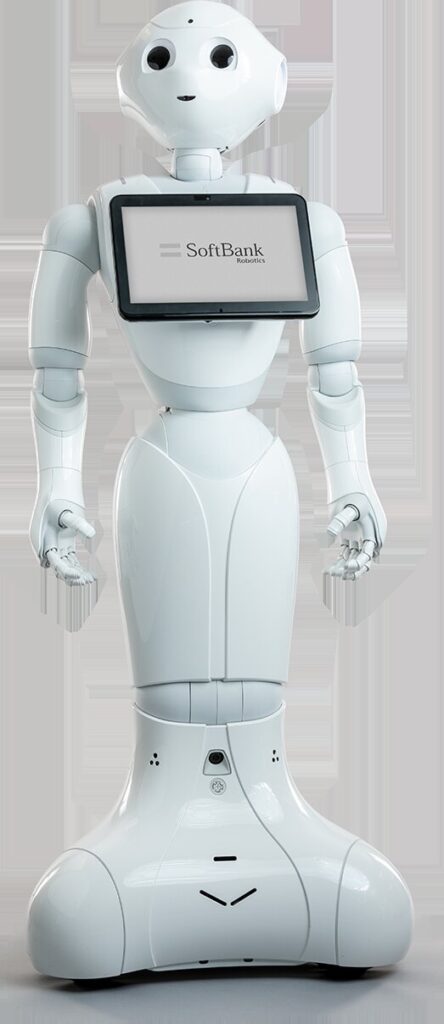Pepper is a semi-humanoid robot designed for human interaction and customer service[1]. Standing 120 cm tall and weighing 28 kg, this friendly robot was introduced in 2014 by SoftBank Robotics (formerly Aldebaran Robotics)[3][5].
Design and Capabilities
Pepper features:
- An omnidirectional wheeled base for mobility
- A tablet display on its chest for information presentation
- Cameras and 3D sensors for visual perception
- Microphones for voice recognition
- Touch sensors on its head and hands[1][3]
With 20 degrees of freedom in its movements, Pepper can gesticulate naturally during interactions[1]. Its emotion recognition capabilities allow it to perceive human feelings through facial expressions and voice tones[3].
Applications
Pepper is primarily used in:
- Retail stores as a greeter and customer service assistant
- Airports and shopping malls for wayfinding
- Healthcare facilities for patient engagement
- Educational settings for programming instruction[1][4]
While initially envisioned as a home companion, Pepper has found its niche in business and public-facing roles[1].
Development Platform
Pepper runs on the NAOqi operating system and can be programmed using various languages including Python, C++, and JavaScript[1]. This open platform allows developers to create custom applications, expanding Pepper’s capabilities[6].
Impact and Future
Although production was paused in 2021 due to limited consumer demand, Pepper remains an important platform for human-robot interaction research[3]. As robotics and AI continue to advance, robots like Pepper may play an increasingly significant role in customer service and public-facing applications.
Citations:
[1] https://robotsguide.com/robots/pepper
[2] https://www.youtube.com/watch?v=kr05reBxVRs
[3] https://en.wikipedia.org/wiki/Pepper_%28robot%29
[4] https://www.softbank.jp/en/robot/
[5] https://www.aldebaran.com/en/pepper
[6] https://unitedrobotics.group/en/robots/pepper
[7] https://us.softbankrobotics.com/pepper
[8] https://www.daytondailynews.com/gdpr.html


